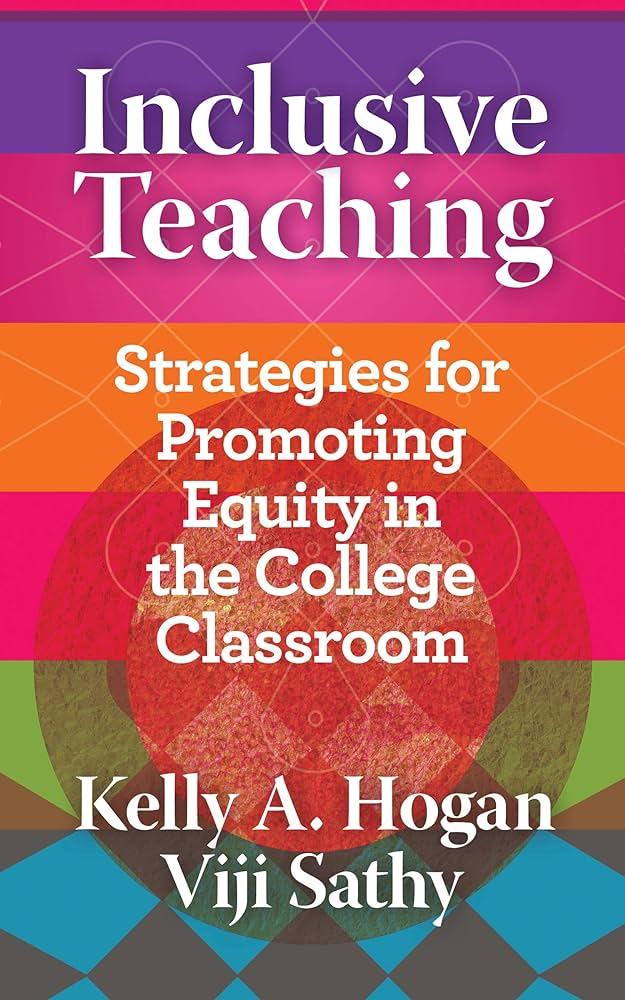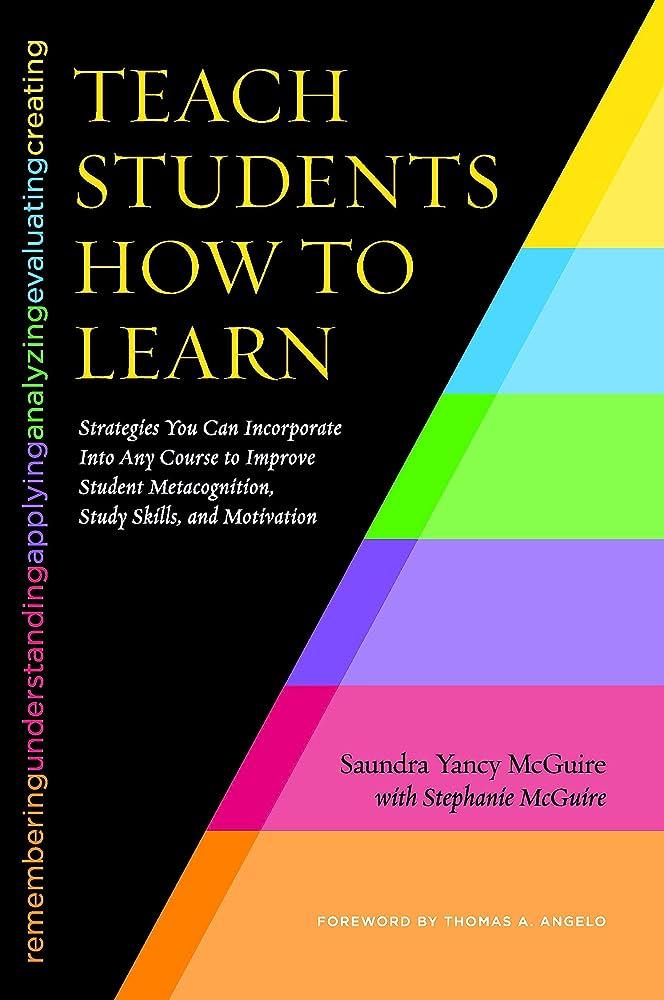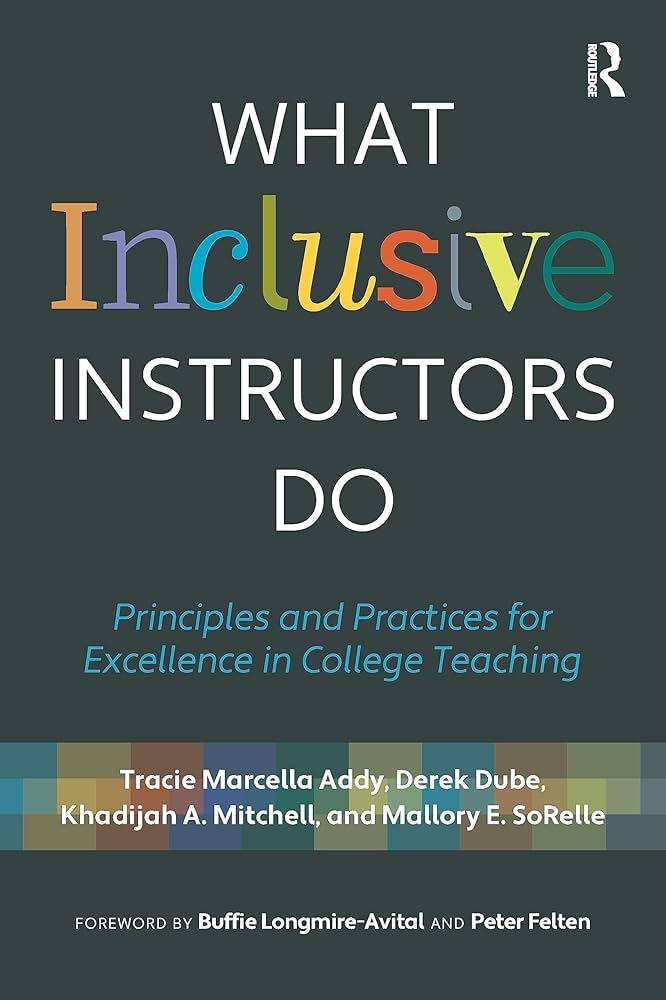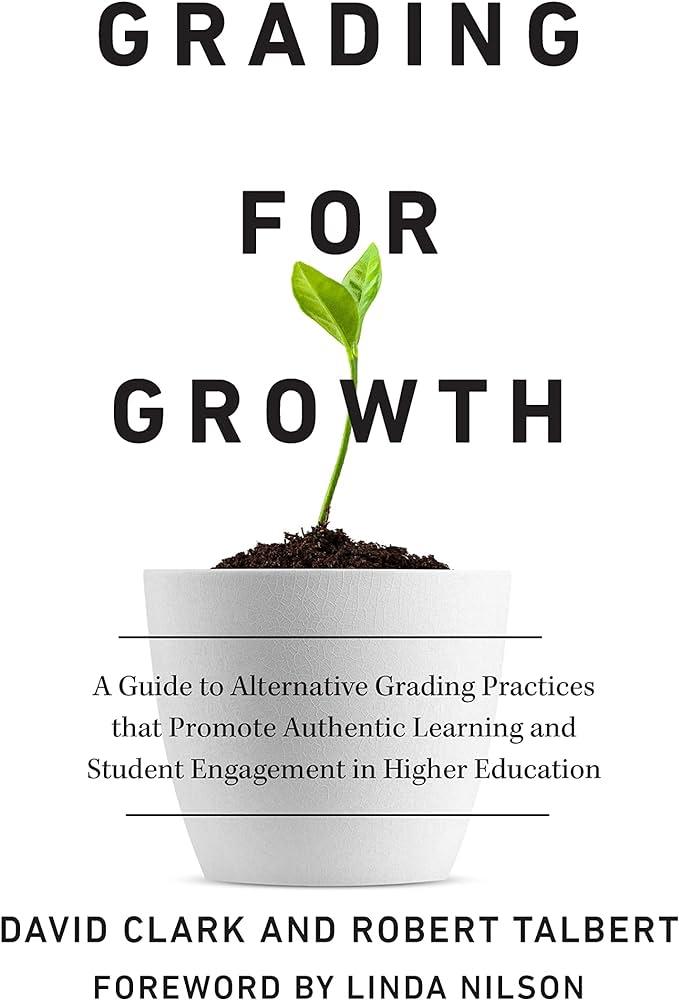Book/Articles
Inclusive Teaching

(Kelly A. Hogan and Viji Sathy)
In a book written by and for college teachers, Kelly Hogan and Viji Sathy provide tips and advice on how to make all students feel welcome and included. They begin with a framework describing why explicit attention to structure enhances inclusiveness in both course design and interactions with and between students. Inclusive Teaching then provides practical ways to include more voices in a series of contexts: when giving instructions for group work and class activities, holding office hours, communicating with students, and more. The authors finish with an opportunity for the reader to reflect on what evidence to include in a teaching dossier that demonstrates inclusive practices.
The work of two highly regarded specialists who have delivered over a hundred workshops on inclusive pedagogy and who contribute frequently to public conversations on the topic, Inclusive Teaching distills state-of-the-art guidance on addressing privilege and implicit bias in the college classroom. It seeks to provide a framework for individuals and communities to ask, Who is being left behind and what can teachers do to add more structure?
Teach Students How to Learn

(Sandra Yancy McGuire w/ Stephanie McGuire)
What is preventing your students from performing according to expectations? Saundra McGuire offers a simple but profound answer: If you teach students how to learn and give them simple, straightforward strategies to use, they can significantly increase their learning and performance. For over a decade Saundra McGuire has been acclaimed for her presentations and workshops on metacognition and student learning because the tools and strategies she shares have enabled faculty to facilitate dramatic improvements in student learning and success.
Teach Students How to Learn encapsulates the model and ideas she has developed in the past fifteen years, ideas that are being adopted by an increasing number of faculty with considerable effect. The methods she proposes do not require restructuring courses or an inordinate amount of time to teach. They can often be accomplished in a single session, transforming students from memorizers and regurgitators to students who begin to think critically and take responsibility for their own learning.
First, she demonstrates how introducing students to metacognition and Bloom’s Taxonomy reveals to them the importance of understanding how they learn and provides the lens through which they can view learning activities and measure their intellectual growth. Next, she presents a specific study system that can quickly empower students to maximize their learning. Then, she addresses the importance of dealing with emotion, attitudes, and motivation by suggesting ways to change students’ mindsets about ability and by providing a range of strategies to boost motivation and learning; finally, she offers guidance to faculty on partnering with campus learning centers. She pays particular attention to academically unprepared students, noting that the strategies she offers for this particular population are equally beneficial for all students.
While stressing that there are many ways to teach effectively, and that readers can be flexible in picking and choosing among the strategies she presents, Saundra McGuire offers the reader a step-by-step process for delivering the key messages of the book to students in as little as 50 minutes. Free online supplements provide three slide sets and a sample video lecture. This book is written primarily for faculty but will be equally useful for TAs, tutors, and learning center professionals.
What Inclusive Instructors Do

(Tracie Marcella Addy, Derek Dube, Khadijah A. Mitchell, and Mallory E. SoRelle)
Inclusive instruction is teaching that recognizes and affirms a student's social identity as an important influence on teaching and learning processes, and that works to create an environment in which students are able to learn from the course, their peers, and the teacher while still being their authentic selves. It works to disrupt traditional notions of who succeeds in the classroom and the systemic inequities inherent in traditional educational practices (full-time Academic Professional, Doctorate-granting University, Education).
What Inclusive Instructors Do uniquely offers the distilled wisdom of scores of instructors across ranks, disciplines and institution types, whose contributions are organized into a thematic framework that progressively introduces the reader to the key dispositions, principles and practices for creating the inclusive classroom environments (in person and online) that will help their students succeed. The authors asked the hundreds of instructors whom they surveyed as part of a national study to define what inclusive teaching meant to them and what inclusive teaching approaches they implemented in their courses. The instructors’ voices ring loudly as the authors draw on their responses, building on their experiences and expertise to frame the conversation about what inclusive teachers do. The authors in addition describe their own insights and practices, integrating and discussing current literature relevant to inclusive teaching to ensure a research-supported approach.
Inclusive teaching is no longer an option but a vital teaching competency as our classrooms fill with racially diverse, first generation, and low income and working class students who need a sense of belonging and recognition to thrive and contribute to the construction of knowledge. With questions for reflection embedded throughout the book, the authors provide the reader with an inviting and thoughtful guide to develop their own inclusive teaching practices. By utilizing the concepts and principles in this book readers will be able to take steps to transform their courses into spaces that are equitable and welcoming and adopt practical strategies to address the various inclusion issues that can arise. The book will also appeal to educational developers and staff who support instructors in their inclusive teaching efforts.
Grading for Equity

(Joe Feldman)
Here at last―and none too soon―is a resource that delivers the research base, tools, and courage to tackle one of the most challenging and emotionally charged conversations in today’s schools: our inconsistent grading practices and the ways they can inadvertently perpetuate the achievement and opportunity gaps among our students.
With Grading for Equity, Joe Feldman cuts to the core of the conversation, revealing how grading practices that are accurate, bias-resistant, and motivational will improve learning, minimize grade inflation, reduce failure rates, and become a lever for creating stronger teacher-student relationships and more caring classrooms.
Essential reading for school-wide and individual book study or for student advocates, Grading for Equity provides:
- A critical historical backdrop, describing how our inherited system of grading was originally set up as a sorting mechanism to provide or deny opportunity, control students, and endorse a "fixed mindset" about students’ academic potential―practices that are still in place a century later.
- A summary of the research on motivation and equitable teaching and learning, establishing a rock-solid foundation and a "true north" orientation toward equitable grading practices
- Specific grading practices that are more equitable, along with teacher examples, strategies to solve common hiccups and concerns, and evidence of effectiveness.
- Reflection tools for facilitating individual or group engagement and understanding.
As Joe writes, "Grading practices are a mirror not just for students, but for us as their teachers." Each one of us should start by asking, "What do my grading practices say about who I am and what I believe?" Then, let’s make the choice to do things differently . . . with Grading for Equity as a dog-eared reference.
Grading for Growth

(David Clark and Robert Talbert)
Are you satisfied with your current and traditional grading system? Does it accurately reflect your students’ learning and progress? Can it be gamed? Does it lead to grade-grubbing and friction with your students?
The authors of this book – two professors of mathematics with input from colleagues across disciplines and institutions – offer readers what they to be a fundamentally more effective and authentic approach to grading that they have implemented for over a decade.
Recognizing that traditional grading penalizes students in the learning process by depriving them of the formative feedback that is fundamental to improvement, the authors offer alternative strategies that encourage revision and growth. Alternative grading is concerned with students’ eventual level of understanding. This leads to big changes: Students take time to review past failures and learn from them. Conversations shift from “why did I lose a point for this” to productive discussions of content and process. Alternative grading can be used successfully at any level, in any situation, and any discipline, in classes that range from seminars to large multi-section lectures.
This book offers a comprehensive introduction to alternative grading, beginning with a framework and rationale for implementation and evidence of its effectiveness. The heart of the book includes detailed examples – including variations on Standards-Based Grading, Specifications Grading, and ungrading -- of how alternative grading practices are used in all kinds of classroom environments, disciplines, and institutions with a focus on first-hand accounts by faculty who share their practices and experience. In addition, the book includes a workbook chapter that takes readers through a step-by-step process for building a prototype of their own alternatively graded class and ends with concrete, practical, time-tested advice for new practitioners. The underlying principles of alternative grading involve (1) Evaluating student work using clearly defined and context-appropriate content standards. (2) Giving students helpful, actionable feedback. (3) Summarizing the feedback with marks that indicate progress rather than arbitrary numbers. (4) Allowing students to revise without penalty, using the feedback they receive, until the standards are met or exceeded.
Grading for Growth is intended for faculty interested in exploring alternative forms of learning assessment as well as those currently using alternative grading systems who are looking for ideas and options to refine practice.